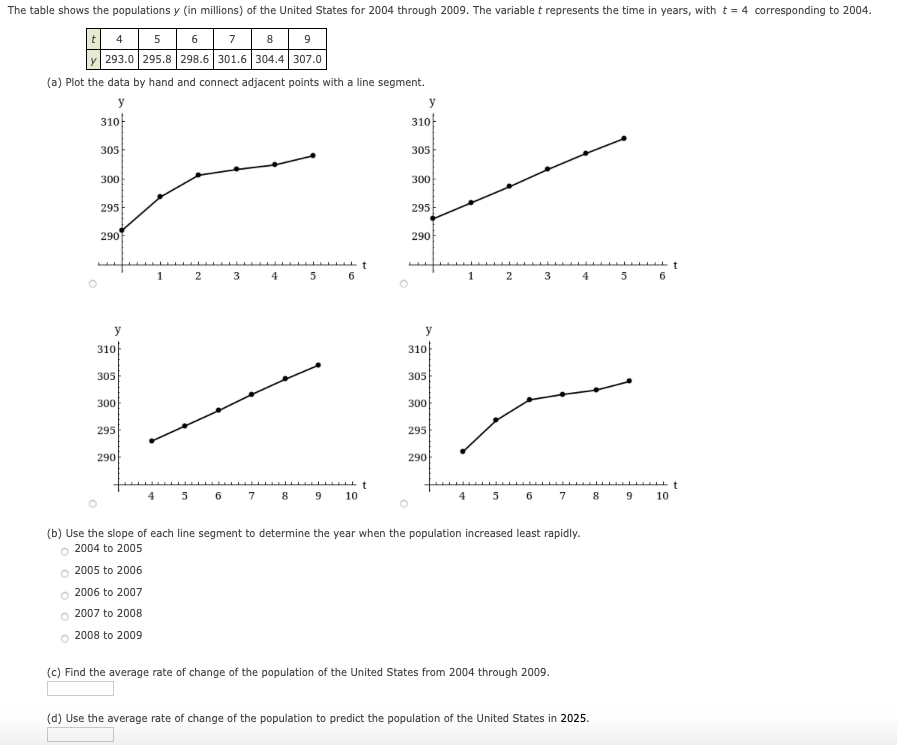The table shows the populations y (in millions) of the United States for 2004 through 2009. The variable t represents the time in years, with t = 4 corresponding to 2004. t 4 5 6 7 8 9 Y 293.0 295.8 298.6 301.6 304.4 307.0 (a) Plot the data by hand and connect adjacent points with a line segment. y 310 310 305 305 300 300 295 295 290 290 ---- Lt 1 4 1 4 5 6 y y 310| 310| 305 305 300 300 295 295 290 290 7 8 9 10 4 5 6 7 8 10 (b) Use the slope of each line segment to determine the year when the population increased least rapidly. 2004 to 2005 2005 to 2006 2006 to 2007 2007 to 2008 2008 to 2009 (c) Find the average rate of change of the population of the United States from 2004 through 2009.
Minimization
In mathematics, traditional optimization problems are typically expressed in terms of minimization. When we talk about minimizing or maximizing a function, we refer to the maximum and minimum possible values of that function. This can be expressed in terms of global or local range. The definition of minimization in the thesaurus is the process of reducing something to a small amount, value, or position. Minimization (noun) is an instance of belittling or disparagement.
Maxima and Minima
The extreme points of a function are the maximum and the minimum points of the function. A maximum is attained when the function takes the maximum value and a minimum is attained when the function takes the minimum value.
Derivatives
A derivative means a change. Geometrically it can be represented as a line with some steepness. Imagine climbing a mountain which is very steep and 500 meters high. Is it easier to climb? Definitely not! Suppose walking on the road for 500 meters. Which one would be easier? Walking on the road would be much easier than climbing a mountain.
Concavity
In calculus, concavity is a descriptor of mathematics that tells about the shape of the graph. It is the parameter that helps to estimate the maximum and minimum value of any of the functions and the concave nature using the graphical method. We use the first derivative test and second derivative test to understand the concave behavior of the function.

Trending now
This is a popular solution!
Step by step
Solved in 4 steps with 3 images









